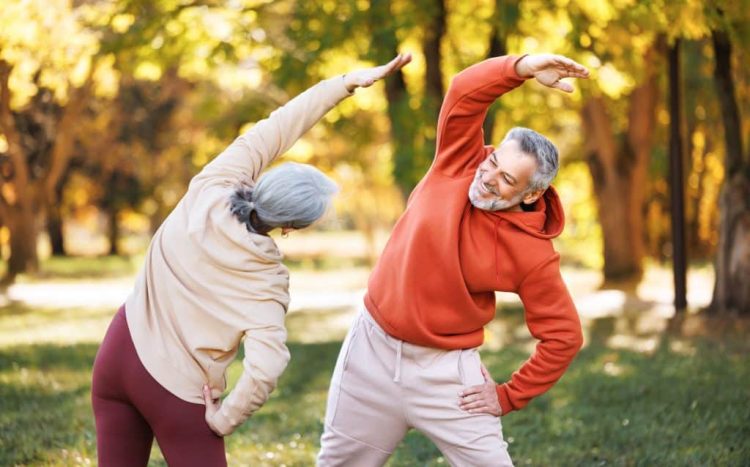Staying steady on your feet doesn’t have to mean pushing your body to its limits. For many adults over the age of 65, feeling a little more cautious while walking or moving is common—but it doesn’t have to be permanent. The truth is, even simple movements done consistently can go a long way toward supporting balance and helping prevent falls.
At Savoy Therapy, we often work with individuals who are unsure where to begin when it comes to improving stability. They’ve noticed some changes—maybe it takes a little longer to get out of a chair, or walking across the yard feels more uncertain than it used to. These changes can be frustrating, even a little scary. But what we’ve found is this: with the right approach, you can rebuild confidence, support your stability, and maintain your independence.
This guide will walk you through how to strengthen your stability and prevent falls—without putting unnecessary strain on your joints or daily routine.
Why Balance Matters More Than Ever
Balance plays a critical role in nearly everything we do. Whether it’s turning to answer the phone, stepping out of bed, or walking down the driveway to get the mail, balance allows us to move safely and independently.
Unfortunately, as we age, changes in strength, flexibility, posture, and even vision can all influence our sense of balance. If left unaddressed, these shifts can increase the risk of tripping or falling. In fact, 1 in 4 adults over 65 experiences a fall each year. While that statistic may sound alarming, it’s important to know that most falls are preventable with the right steps in place.
The goal isn’t perfection—it’s progress. Even small movements, done regularly, can build a strong foundation of steadiness and confidence.
3 Gentle Exercises to Support Balance and Movement
These three exercises are ideal for older adults looking to enhance their coordination and support better mobility—without overexertion.
1. Heel-to-Toe Walk
This classic balance exercise helps train your brain and body to work together. It supports coordination, posture, and foot alignment—all essential for safe walking.
How to do it:
- Stand tall and place one foot directly in front of the other, so your heel touches the toes of your back foot.
- Keep your gaze forward (not at your feet) to help maintain balance.
- Continue stepping heel-to-toe for 10 to 20 steps in a straight line.
- Hold a wall or chair nearby for support if needed.
Why it works:
Practicing this movement helps build awareness of foot placement, trains ankle strength, and encourages better control while walking on uneven surfaces.
2. Seated Leg Extensions (Chairobics)
Chair-based exercises—often called “Chairobics”—are ideal for those looking for a low-impact option. These movements support strength in the legs without adding stress to the joints.
How to do it:
- Sit in a sturdy chair with your back straight and both feet flat on the floor.
- Slowly lift one leg, straightening it in front of you.
- Hold for a few seconds, then lower it back down with control.
- Repeat 10 to 15 times, then switch to the other leg.
Why it works:
This move targets the quadriceps and improves the muscles you use to rise from a chair, walk, or navigate stairs—key elements in fall prevention.
3. Tree Pose (Gentle Yoga)
Tree Pose is a simple yoga posture that can be modified for any comfort level. It encourages you to focus, engage your core, and improve your posture—all while practicing balance.
How to do it:
- Stand with feet hip-width apart.
- Shift your weight onto your left foot.
- Bring the sole of your right foot to your inner left calf or thigh (avoid placing it directly on the knee).
- Bring your palms together in front of your chest, or gently raise them overhead.
- Hold for 20–30 seconds, then switch sides.
Tip: Use a chair or wall for support until you feel more confident.
Why it works:
Yoga helps with both physical balance and mental calmness—two things that naturally support steady movement and reduced risk of falls.
Other Smart Ways to Support Stability at Home
Improving balance isn’t just about exercise—it’s also about creating a safe environment and developing awareness of your body’s needs.
Here are additional tips to help support your movement and prevent falls:
🔹 Keep Your Pathways Clear
Remove loose rugs, cords, or clutter from walkways. Install nightlights in hallways and bathrooms to prevent stumbles in the dark.
🔹 Wear Supportive Footwear
Choose shoes with non-slip soles and good arch support. Avoid walking in socks or slippery footwear.
🔹 Stay Hydrated and Nourished
Dehydration can affect coordination and cause dizziness. Make sure you’re drinking enough water and getting enough nutrients to keep your muscles and joints functioning well.
🔹 Get Regular Vision and Hearing Checks
Your ability to balance is closely tied to both vision and inner-ear function. Keeping these areas in check can help prevent missteps.
The Emotional Side of Balance
Many people don’t talk about it—but the fear of falling can impact your quality of life just as much as the fall itself. That fear might lead you to avoid the things you love: gardening, visiting friends, or going on daily walks.
What we’ve learned at Savoy Therapy is this: when people feel more secure in their bodies, that fear begins to fade. You walk taller. You breathe a little deeper. You trust your footing again. And that’s when life starts to feel free again—not limited by hesitation, but open to possibility.
How Savoy Therapy Can Help
Our goal isn’t just to help you “exercise”—it’s to give you tools, strategies, and the guidance to help you feel more in control of your movement. Whether you’ve had a fall or just want to avoid one, we’re here to help you stay strong, safe, and independent.
We start by learning about you—your routines, your concerns, and your goals. From there, we build a tailored movement plan designed to gently strengthen your body and build confidence in every step you take.
✅ Your Next Step: Take Action Today
Improving your balance doesn’t require hours in a gym or high-impact movements. It starts with small, thoughtful actions—and we’re here to guide you.
📥 Download our Free Falls & Balance Guide
This easy-to-follow guide includes tips, simple exercises, and helpful insights into why balance changes with age—and what you can do about it.
👉 Download Here
🎯 Book Your Free Discovery Visit
Meet one-on-one with a member of our team to assess your current balance, discuss your goals, and develop a plan to help you move forward—safely and confidently.
👉 Schedule Now
📞 Or call us at (217) 898-8393
You don’t have to live in fear of falling. Let’s work together to support your strength, improve your steadiness, and help you stay active for years to come.


